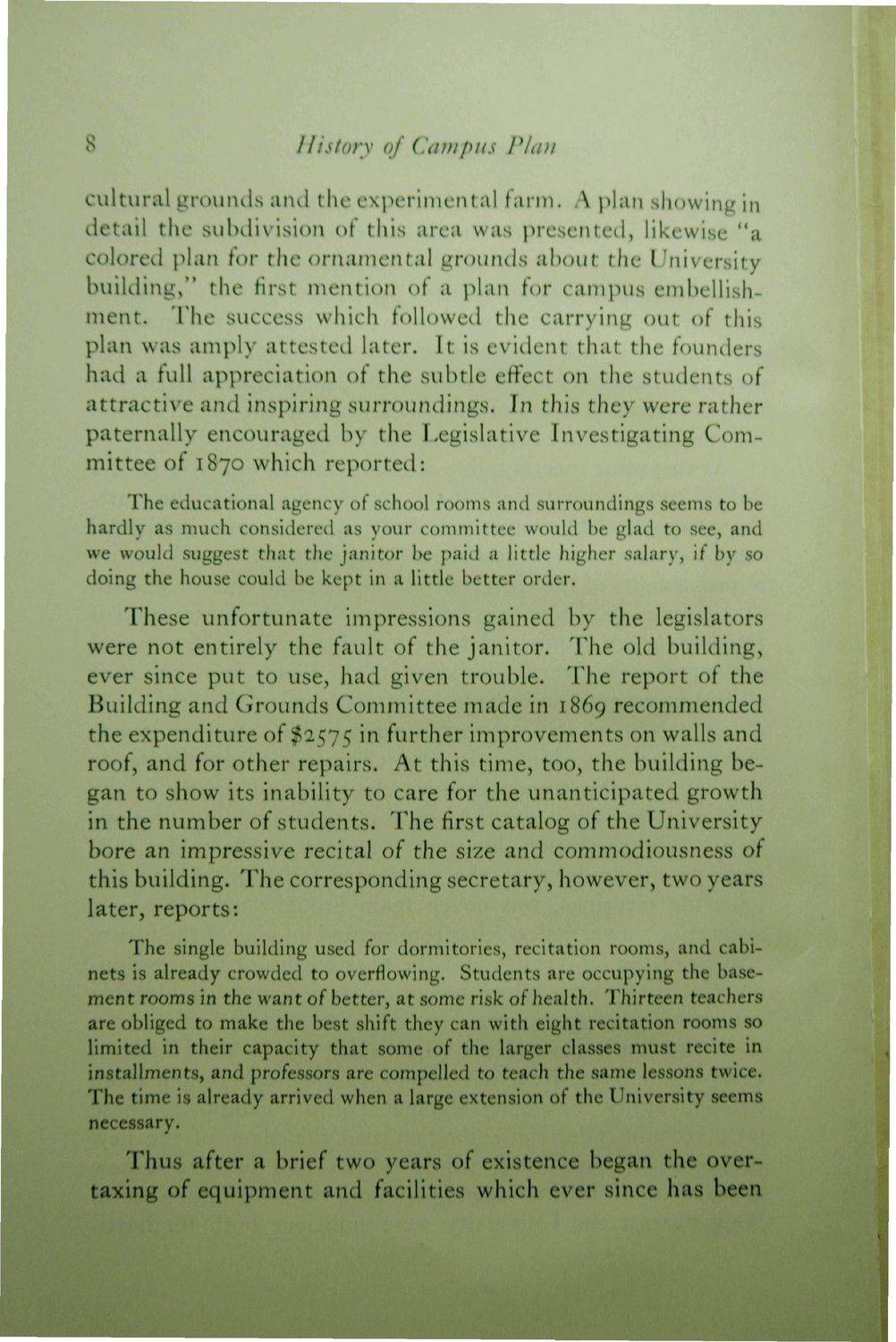Caption: Book - 30 Year Master Plan (Tilton & O'Donnell)
This is a reduced-resolution page image for fast online browsing.

EXTRACTED TEXT FROM PAGE:
8 History of Campus Plan cultural grounds and the experimental farm. A plan showing in detail the subdivision of this area was presented* likewise "a colored plan for the ornamental grounds about the University building/' the first mention of a plan for campus embellish-* ment. The success which followed the carrying out of this plan was amply attested later. It is evident that the founders had a full appreciation of the subtle effect on the students of attractive and inspiring surroundings. In this they were rather paternally encouraged by the Legislative Investigating Committee of 1870 which reported: The educational agency of school rooms and surroundings seems to be hardly as much considered as your committee would be glad to see, and we would suggest that the janitor be paid a little higher salary, if by so doing the house could be kept in a little better order. These unfortunate impressions gained by the legislators were not entirely the fault of the janitor. The old building, ever since put to use, had given trouble. The report of the Building and Grounds Committee made in 1869 recommended the expenditure of $2575 in further improvements on walls and roof, and for other repairs. At this time, too, the building began to show its inability to care for the unanticipated growth in the number of students. The first catalog of the University bore an impressive recital of the size and commodiousness of this building. The corresponding secretary, however, two years later, reports: The single building used for dormitories, recitation rooms, and cabinets is already crowded to overflowing. Students are occupying the basement rooms in the want of better, at some risk of health. Thirteen teachers are obliged to make the best shift they can with eight recitation rooms so limited in their capacity that some of the larger classes must recite in installments, and professors are compelled to teach the same lessons twice. The time is already arrived when a large extension of the University seems necessary. Thus after a brief two years of existence began the overtaxing of equipment and facilities which ever since has been
|